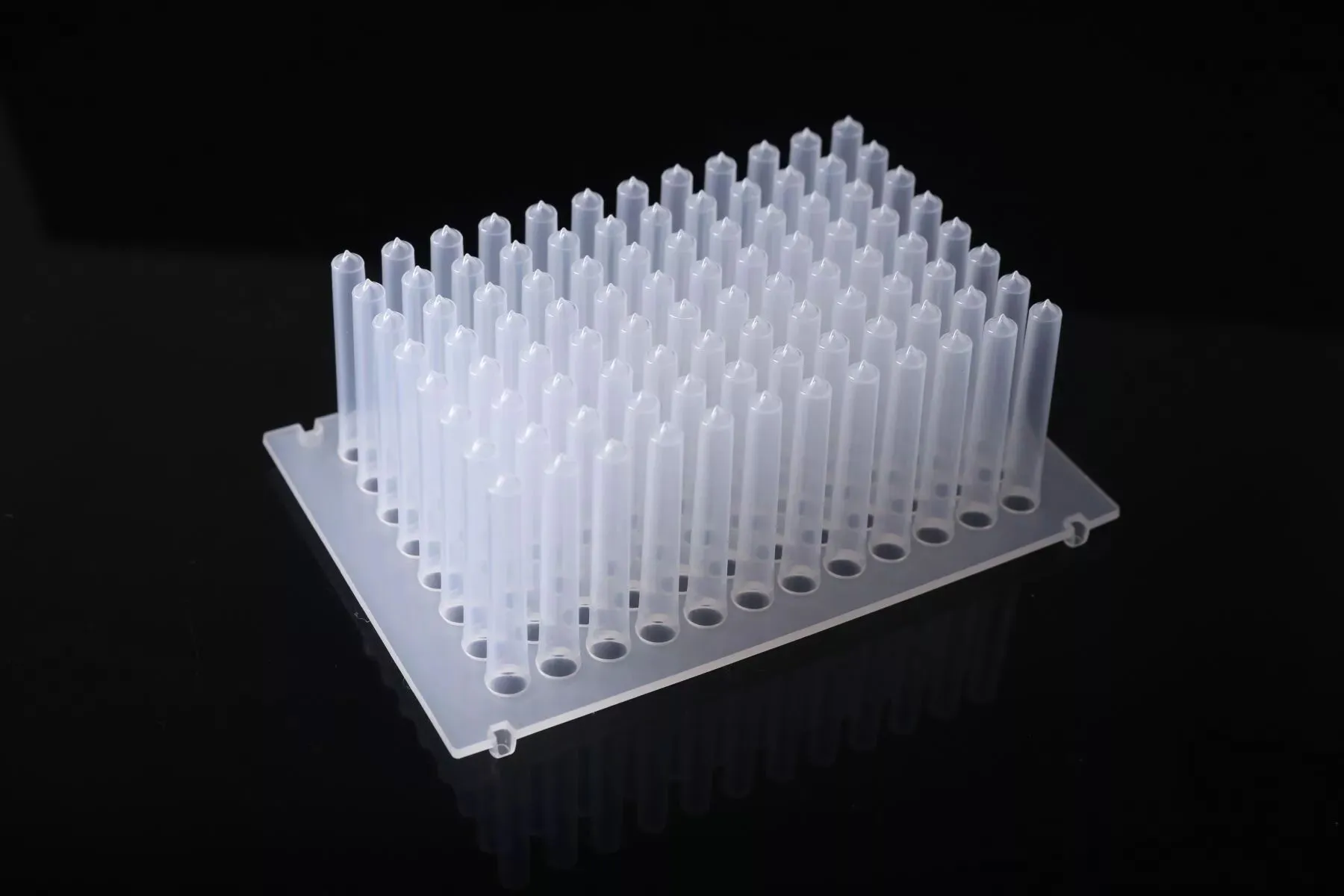Specific Operations and Considerations When Using Pipette Tip Boxes
Jan 20, 2024
When using pipette tip boxes, it is essential to follow specific procedures and be mindful of various considerations. Pipette tips are commonly packaged in two forms: bagged and boxed. Bagged tips are individually sealed in plastic bags, while boxed tips come pre-packaged in plastic containers, eliminating the need for manual handling. Boxed tips, particularly those made of durable polypropylene, offer a cleaner and safer solution, suitable for modern laboratories.
Specific Operations for Using Pipette Tip Boxes:
Preparation: Add water to the pipette tip box until it nearly reaches the overflow nozzle's height, then stop adding water. Repeat this process without adding water to start the circulation. Change the water at least once a week to maintain cleanliness.
Vacuum Operation: Connect the vacuum sleeve of the equipment requiring vacuum to the box's vacuum nozzle. Close the circulation switch, turn on the power, and initiate the vacuum operation.
Continuous Operation: When running the pipette tip box continuously, connect a drainage hose to the overflow nozzle and adjust the tap water to control the water temperature, ensuring stable vacuum levels.
Cooling Circulating Water: For cooling applications, connect the inlet and outlet pipes of the cooling device to the circulation water outlet and inlet nozzles. Turn on the circulation water switch to supply cooling water.
Materials and Advancements:
To address the challenges of space in smaller laboratories, an improved version of the pipette tip box has been introduced. This redesigned box, made from high-quality polypropylene, features a compact, single-molded shell, reducing its volume while maintaining key characteristics such as a clean, reusable, and visually appealing design.
Considerations and Recommendations:
Material Quality: Ensure the pipette tips are made from high-quality polypropylene to prevent contamination. Choose pipette tip boxes with a corrosion-resistant, easy-to-clean surface.
Sealing Consistency: Check the consistency of the box's sealing to maintain even water levels and stability during vacuum operations.
Usage Recommendations:
Proper Handling: Maintain the correct posture when transporting liquids. Consider using pipette tip boxes with finger hooks to reduce hand fatigue. Regularly switch hands during use.
Sealing Inspection: Periodically check the sealing of the pipette tip box. If aging or leaks are detected, promptly replace the sealing ring.
Lubrication: Apply a thin layer of lubricating oil to pipette tip boxes before and after a period of use, ensuring the piston's seal. Some high-quality pipette tip boxes may not require additional lubrication.
Adhering to these guidelines ensures efficient and accurate pipetting while extending the lifespan of pipette tip boxes. Regular maintenance, proper handling, and the use of high-quality materials contribute to a successful laboratory experience.
Specific Operations for Using Pipette Tip Boxes:
Preparation: Add water to the pipette tip box until it nearly reaches the overflow nozzle's height, then stop adding water. Repeat this process without adding water to start the circulation. Change the water at least once a week to maintain cleanliness.
Vacuum Operation: Connect the vacuum sleeve of the equipment requiring vacuum to the box's vacuum nozzle. Close the circulation switch, turn on the power, and initiate the vacuum operation.
Continuous Operation: When running the pipette tip box continuously, connect a drainage hose to the overflow nozzle and adjust the tap water to control the water temperature, ensuring stable vacuum levels.
Cooling Circulating Water: For cooling applications, connect the inlet and outlet pipes of the cooling device to the circulation water outlet and inlet nozzles. Turn on the circulation water switch to supply cooling water.
Materials and Advancements:
To address the challenges of space in smaller laboratories, an improved version of the pipette tip box has been introduced. This redesigned box, made from high-quality polypropylene, features a compact, single-molded shell, reducing its volume while maintaining key characteristics such as a clean, reusable, and visually appealing design.
Considerations and Recommendations:
Material Quality: Ensure the pipette tips are made from high-quality polypropylene to prevent contamination. Choose pipette tip boxes with a corrosion-resistant, easy-to-clean surface.
Sealing Consistency: Check the consistency of the box's sealing to maintain even water levels and stability during vacuum operations.
Usage Recommendations:
Proper Handling: Maintain the correct posture when transporting liquids. Consider using pipette tip boxes with finger hooks to reduce hand fatigue. Regularly switch hands during use.
Sealing Inspection: Periodically check the sealing of the pipette tip box. If aging or leaks are detected, promptly replace the sealing ring.
Lubrication: Apply a thin layer of lubricating oil to pipette tip boxes before and after a period of use, ensuring the piston's seal. Some high-quality pipette tip boxes may not require additional lubrication.
Adhering to these guidelines ensures efficient and accurate pipetting while extending the lifespan of pipette tip boxes. Regular maintenance, proper handling, and the use of high-quality materials contribute to a successful laboratory experience.
Previous: How to Prevent Contamination in Pipetting Operation
Next: The Use and Precautions of Centrifuge Tubes



